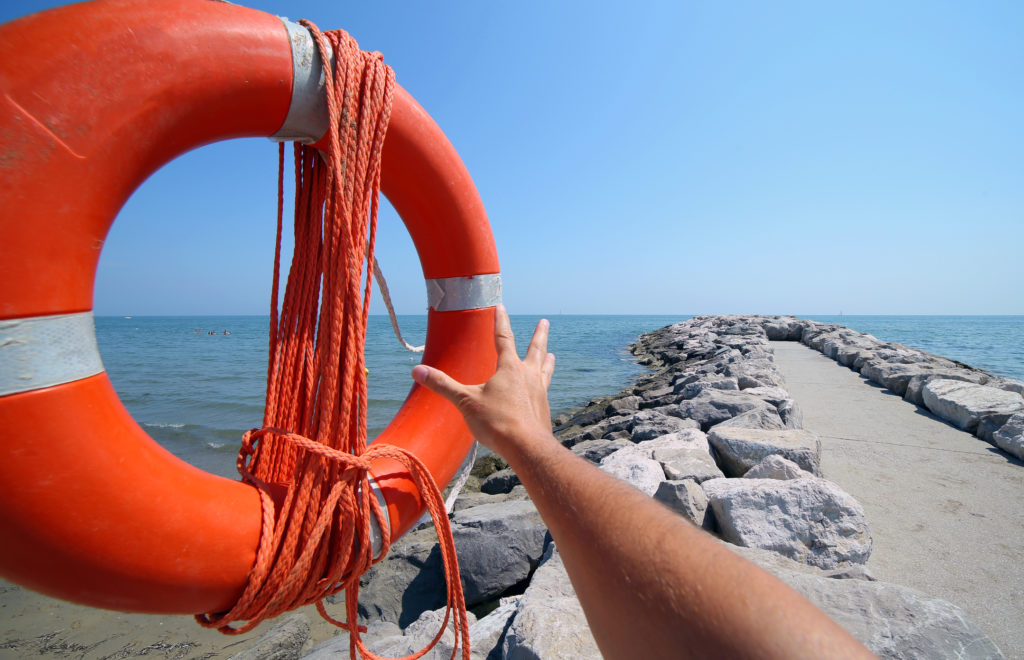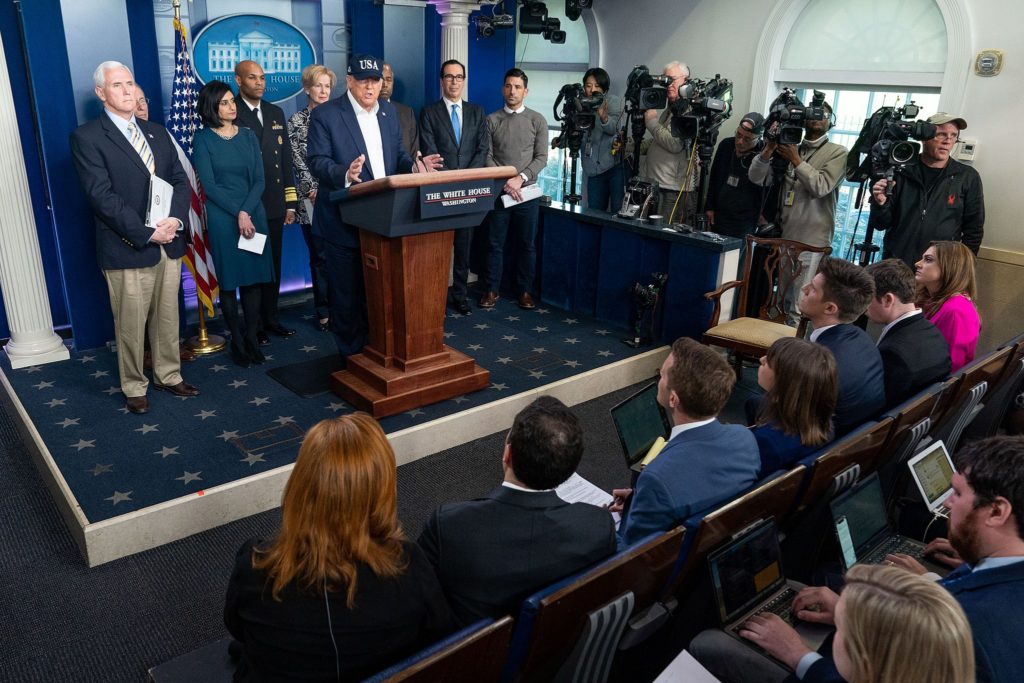50 Ways to Have a Crisis (And How to Take Them On)

If you were to think of a crisis as a meteorological event, it might start small, like a few raindrops that eventually transform into a steady, drenching downpour. At other times, it arrives full bore – a tempest capable of leveling everything in its path.
All of which is to say: The crisis may be coming, whether you are prepared or not.
The difference between a crisis that is played out in the media and a bout of bad press is the degree and intensity of public reaction. If you get out ahead of the storm, you might only have a small case of the bad press. If you fail to properly assess the power the burgeoning crisis, you could find yourself facing a public that only has anger, outrage, and an enduring contempt for you or your organization.
Preparation helps to limit some of the damage. But, how do you adequately prepare?
You start by thinking of everything that could go wrong.
We’ve thought of 50 such scenarios, from real-life weather disasters to product recalls and executive wrongdoing. You are not limited to these, of course (sadly), but they are a start. Use this as a guide for the ones your organization most likely will face. At the end of the post, we offer some tips on how to plan for your crisis response.
Let’s get started. With a nod to Paul Simon, here are…
50 Ways to Have a Crisis
Natural Disasters
- Hurricane/Cyclone/Typhoon/Tropical Storm
- Blizzard
- Nor’easter
- Fatal earthquake
- Drought
- Flash floods
Unnatural Disasters
- Plane crash
- Hazardous chemical spill
- Maritime disaster (disease outbreak, pirate attack, accident, passengers stranded)
- Terrorist attack/Mass shooting
- Fatal mass transit accident
- Riots/social unrest
Product Crises
- Dangerous or defective product
- External product tampering
- Product recall
- Contaminated food
- Videos/images of unsafe or unsanitary work conditions, food preparation
- Consumer boycott
Policy Crises
- Unpopular change to policy, procedure, fee
- Unpopular stance on social or cultural movement
- Controversial comments on political issue
- Lack of transparency
- Delay in addressing deaths/injuries caused by product use or consumption
- Delay in addressing emotional/physical effects that employee’s illegal or inappropriate behavior and action had on others
Process Crises
- Failure to deliver product, services, menu items, in a timely manner
- Incompetent customer service
- Slow order fulfillment
- Data breach/Cyber attack
- Computer software glitch
- Regulatory investigation
- Employee error that leads to breach in public safety
Employee Crises
- Layoffs
- Sexual harassment
- Discrimination based on race, ethnicity, marital status, gender, age, or political views
- Illegal labor practices
- Labor strike
- Workplace violence
Personal Crises
- Sexual improprieties of executives, board members, employees
- Unethical comments or actions among key players
- Conflicts of interest
- Celebrity endorser/influencer behaves badly or publicly offers an inappropriate comment
- CEO sticks his or her foot in his or her mouth
- Having knowledge of an immoral, unethical, illegal practice or act and allowing it to continue
Wrongdoing
- Embezzlement
- Fraudulent financial reporting
- Bribery
- Leak of financial or other sensitive information
- Improper use of donations/contributions
- Institutional or executive coverup
- Negligence that leads to critical injuries, death (nursing home, hospital, etc.)
Assessing risk
The last exercise you or your team might want to do is think of scenarios where things go wrong. Perhaps you think you, your organization, or your company is immune to such a risk. Perhaps Oxfam, Nissan, and H&M all thought the same thing.
Political scandal, corruption, and other malfeasance have been around long before the 21st century. The press, meanwhile, was right there to cover it. However, today’s social media platforms can quickly cause a crisis to spread much quicker than ever before. A crisis communications plan gives you the tools to slow the spread and provide the needed information to shape the narrative being played out through both traditional and social media.
The best way to assess risk is to start by listing several crises that are most likely to occur. The ones that are most likely to inflict damage to your financials, reputation, or ability to continue to do business should be at the top of the list.
We’ll start you off with a few:
- A grocery store chain prepares for the discovery of unsanitary conditions, which threaten the health of customers at one of its stores.
- A manufacturing company anticipates how to address the revelation that one of its products contains defective parts that have led to customer deaths.
- A school district practices its response to the disappearance of a student from school grounds.

Making Your Plan
There are several excellent sources that can help you to better understand the fine points of crisis communications. They include Jane Jordan-Meier’s The Four Stages of Highly Effective Crisis Management, crisis communication professional Melissa Agnes’ Crisis Ready: Building an Invincible Brand, Eric Dezenhall and John Weber’s Damage Control: The Essential Lessons of Crisis Management, and W. Timothy Coombs and Sherry J. Holladay’s The Handbook of Crisis Communication.
Reading up on the literature is one way to ensure you effectively dot the i’s and cross the t’s in your plan, but we also have a few tips and strategies that work for addressing most crises.
One overarching bit of advice, however, is this:
Don’t lose sight of the victims – ever. You will be judged by the public, as well as the family and friends of any victims, by your words, your actions, and the authenticity and concern you brought to both.
Form and Prepare Your Crisis Team
Spokespersons, CEOs, other top executives, and subject matter experts should be well-versed on their expected role and responsibilities when chaos hits. But, don’t overlook the rest of the employees. We mean every single person who represents your company and interacts with the public. Do they know what they are supposed to say when the reporters come knocking?
Also, do employees know what is expected of them when it comes to discussing or providing information about the crisis on social media platforms?
In time of crisis, reporters will have no qualms tracking down all channels of communication to get the news – employee social media feeds, on-site vendors, security guards, or receptionists.
Monitor Your Channels
If you have been effective in monitoring your social media channels and engaging with your audience, you will have a sense of their values, needs, and how they view your product or service. That knowledge will help you and your team decide when to begin responding to the crisis (the message, etc.), the best person (or people) to respond, and which channels you must use to issue your response.
Practice
Schedule drills that test the scenarios you have developed. Then, evaluate the response. The more you do them, the better prepared your team and the employees will be.
Want to see a list of 100 types of crises?
Receive the list, and other exclusive material, when you register for one of our media training classes.


